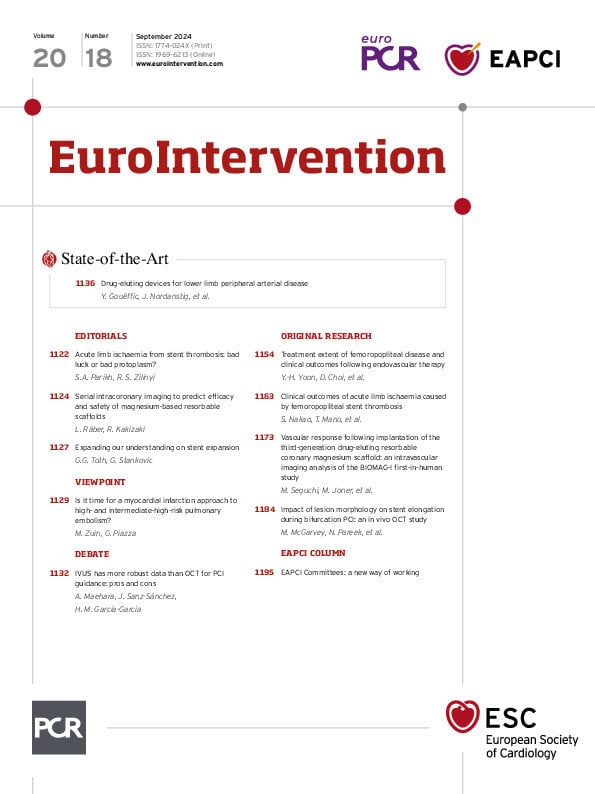Interested in the endovascular treatment options for peripheral artery disease (PAD)? You’ll find several key articles in this issue touching on various aspects of PAD treatment and, as always, a selection of many of the other topics that make up the world of interventional cardiology today...
Drug-eluting devices for PAD
Endovascular repair has become the preferred and recommended treatment for most patients with symptomatic peripheral artery disease, and knowing the limits and efficacy of available devices is clearly important. In this state-of-the-art review, Yann Gouëffic, Joakim Nordanstig and colleagues provide a comprehensive overview of the efficacy and safety of drug-coated devices for femoropopliteal and below-the-knee disease.
Outcomes of endovascular therapy for femoropopliteal disease
Yong-Hoon Yoon, Donghoon Choi and colleagues probe the clinical significance of treatment extent in patients undergoing endovascular therapy for femoropopliteal disease. The results suggest that drug-eluting devices could be the most effective treatment modality for those with long, diffuse femoropopliteal disease involving both the superficial femoral artery and the popliteal artery.
Acute limb ischaemia due to femoropopliteal stent thrombosis
Sho Nakao, Toshiaki Mano and colleagues investigate the clinical features and outcomes of acute limb ischaemia (ALI) caused by femoropopliteal stent thrombosis (ST) in patients with lower extremity artery disease. The authors find that patients with ALI from femoropopliteal ST were more likely to exhibit conventional atherosclerotic risk factors and that the 12-month amputation- free survival rate was lower compared to those with ALI from other aetiologies.
Imaging substudy of the BIOMAG-I first-in-human study
In a substudy of BIOMAG-1, Masaru Seguchi, Michael Joner and colleagues examine vascular healing after DREAMS 3G resorbable scaffold implantation with both intravascular ultrasound (IVUS) and optical coherence tomography (OCT), focusing on strut visibility, vessel and scaffold areas, and neointimal growth patterns. At 12 months, nearly all the struts were invisible, without evident malapposition.
Stent elongation and lesion morphology
In an in vivo study using OCT, Michael McGarvey, Nilesh Pareek and colleagues explore the relationship between plaque morphology and longitudinal stent behaviour during bifurcation PCI. Contemporary drug-eluting stents were found to elongate in lipid-rich plaque, indicating that an improved understanding of these properties may help to plan for more precise and durable results.

